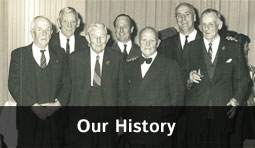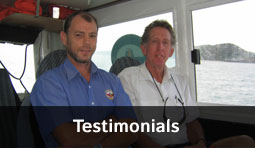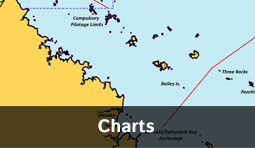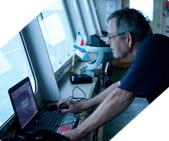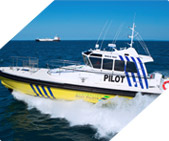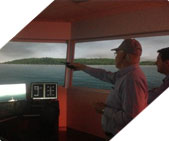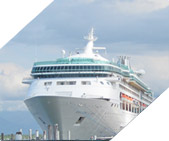Pilot boarding methods
Our Boarding Grounds
ARP has comprehensive coverage of Torres Strait and The Great Barrier Reef, which enables it to cater to almost every shipping need. The company has also strategically positioned its bases of operation near boarding grounds, ensuring an ability to provide on-time performance to its customers. ARP pilots can board at the following Queensland pilot boarding grounds and, if required, will endeavour to board pilots at ports outside of the usual areas of operation if it is logistically possible.| Position | VHFCh/Sat Phone | Transfer Method | |
|---|---|---|---|
| Hydrographers Passage (Blossom Bank) | 19º 43’ S / 150º 26’ E | VHF 16. 09. | Helicopter only |
| Cairns (Yorkeys Knob) | 16º 44’ S / 145º 45’ E | 20 | Launch or helicopter |
| Cape Flattery (Two Mile Opening) | 14º 21’ S / 145º 29.3’ E | VHF 16,11 | Helicopter only |
| Great North East Channel (Dalrymple Isl.) | 9º 34’ S / 143º 24’ E | 13 | Launch only |
| Torres Strait (Goods Island) | 10º 34’ S / 142º 04’ E | 20 | Launch or helicopter |
| Torres Strait (Booby Island) | 10º 36’ S / 141º 50’ E | 20 | Launch or helicopter |
Marine Pilot Transfer Options
Method 1: LaunchShip Masters should ensure that pilot ladders and pilot boarding arrangements comply strictly with current SOLAS regulations and the requirements of the International Maritime Pilots Association. Please also have a strong heaving line ready with which to lift aboard the pilot’s baggage (usually two items).

Method 2: Helicopter
In October 2012, ARP committed to the long-term lease of two state-of-the-art twin engine IFR Agusta 109 Power helicopters to provide a 24-hour, all-weather marine pilot transfer service to/from Blossom Bank in servicing Hydrographers Passage pilotage.
Some details of the Agusta 109 helicopters:

- Fastest production helicopter approximately 45 minutes from Mackay to the Blossom Bank pilot boarding ground
- Full Category A, single engine climb ability
- 8 seats
- Air-conditioned and sound proofed
- 3 axis autopilot + stormscope
- 5 cell fuel unit allowing range in excess of 420nm
- The Royal Australian Navy utilises similar aircraft due to extreme slope limits handling capabilities
Masters should consult the International Chamber of Shipping’s Guide to Helicopter/Ship Operations. To ensure the safe landing and launch helicopter procedures, refer to The Australian Marine Shipping Association’s (AMSA) Marine Orders Part 57 – Helicopter Operations (MO 57). All crew members should remain clear of the landing hatch unless instructed otherwise by the helicopter or reef pilot. The helicopter will call on the designated VHF channel 30 to 40 minutes before the given ETA. About 10 minutes before landing, the helicopter will again call on the prearranged VHF channel to obtain the final information required to make a safe landing on your ship.
The following questions will be asked:
What is your course and speed?
Please respond with your course in degrees true and speed in knots. In most cases, the helicopter landing will be safest when your ship is at full sea speed.
Is your ship rolling?
Please respond with the number of degrees your ship is rolling from side to side. If your roll is too large for the helicopter to land safely, you will be asked to change course to a heading that will reduce the roll to an acceptable range.
What is the relative wind direction and speed?
Please respond with the wind direction across your helicopter landing area, measured in degrees from the bow and either port or starboard, as appropriate. Wind speed is best described in knots.
What is your helicopter landing hatch?
Please respond with the hatch number of your helicopter landing site.
Request permission to land
If everything is satisfactory, please grant permission to land and then standby on the current VHF channel until the pilot is on board. While the helicopter is on deck, please ensure that no one approaches the helicopter unless specifically requested to do so and then only from a direction which enables the helicopter pilot to maintain visual contact with the crew person.
Please do not manoeuvre the vessel while the helicopter is on the deck.
The Australian Maritime Safety Authority (AMSA) Marine Orders Part 57 – Helicopter Operations (MO 57)
Helicopter OperationsTo ensure the safe landing and launch helicopter procedures, The Australian Maritine Safety Authority (AMSA) Marine Orders Part 57 – Helicopter Operations (MO 57) requires:
• The master of a ship ensure that onboard arrangements, equipment, training and drills are at least as effective as those specified in the International Chamber of Shipping’s (ICS) Guide to Ship Helicopter Operations;
• A ship’s arrangements, equipment, crew training and drills for helicopter operations are included in the safety management system onboard and that the master has provided instructions to the crew on these matters;
• Documentary evidence is carried onboard regarding the deck strength of any intended helicopter landing area;
• Detailed communication between the ship and helicopter operator/pilot regarding the location and size of any obstacles in the intended helicopter landing/operating area take place.
Ship’s masters, operators, owners and crew are required to comply with all requirements applicable to them.
To comply, the operator, owner or master of a ship may need to obtain specific advice about the type(s) of helicopters used, and helicopter operations performed, in a particular port in Australia to which the ship may call. It is advisable that this information be obtained well in advance of arrival because many ports transfer their marine pilots using helicopters. Ship’s agents may be able to assist by liaising with relevant port authorities.
Communication
Effective communication between ship and helicopter in preparation for and during helicopter operations is essential to ensure safety. Communication supporting preparation for a helicopter transfer may involve messages passed between the ship operator, the ship’s agent and the helicopter operator.
Communication during helicopter operations will generally be between the helicopter and the ship. Before a helicopter operation is agreed it is essential the ship’s master (possibly with assistance from others, such as ships agents), ensure that all necessary information concerning a ship’s helicopter facilities is provided to the helicopter operator and that this is acknowledged. Helicopter operators must ensure they communicate all important helicopter specific information (such as helicopter weight, landing gear type and rotor diameter) to the ship and the master should reply with formal acknowledgment.
Strength of Helicopter Landing Area
It is a fundamental safety requirement that the intended helicopter landing area is physically capable of withstanding the forces of a helicopter landing on it. MO 57 requires that documentary evidence regarding deck strength be available onboard.
This information must include the maximum weight (tonnes) that can be landed on the nominated helicopter landing area. This information may be provided by:
(a) The classification society that conducts the ship’s surveys;
(b) Shipbuilder; or
(c) A competent authority.
Helicopter Landing Areas
Helicopter landing areas can consist of purpose built landing pads marked in accordance with the requirements of the ICS Guide or areas of the ship’s deck that are free from obstructions and which comply with the clear area requirements of the ICS Guide. These areas of deck may be marked for either landing or winching operations.
However non-purpose built locations are not required to be marked where helicopter operations are “infrequent”.
Noting the operational preference for helicopters to land on rather than carry out hover/ winch operations, a space may be marked as:
• A designated landing location marked as “H”.
• A “Winch Only” location (areas marked “Winch Only” are normally designated as such due to the presence of obstructions in the approach zones). However, helicopters are permitted to land in unmarked or “Winch Only” locations so long as the area is capable of withstanding the dynamic and static loads imposed by the landing and take off and complies with the clear area and other safety requirements as set out in MO 57.
Source: AMSA
Additional information regarding helicopter operations can be found at:
http://www.amsa.gov.au/vessels/standards-regulations/marine-orders/documents/MO57-modcomp-130726Z.pdf




